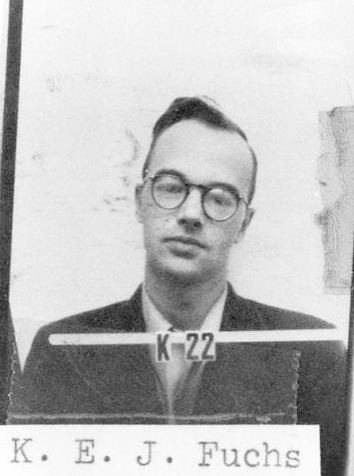 | ||
Cold War espionage describes the intelligence gathering activities during the Cold War (circa 1947-1991) between the West (chief US, UK and NATO allies) and the Eastern Bloc (Soviet Union and aligned countries of Warsaw Pact). Because each side was preparing to fight the other, intelligence on the opposing side's intentions, military, and technology was of paramount importance. To gather this information, the two relied on a wide variety of military and civilian agencies. While several such as the CIA and KGB became synonymous with Cold War espionage, many other organizations played key roles in the collection and protection of the section concerning detection of spying, and analysis of a wide host of intelligence disciplines.
Contents
Background
Soviet espionage in the United States during the Cold War was an outgrowth in World War II nuclear espionage, and Cold War espionage was depicted in works such as the James Bond and Matt Helm books and movies.
During the Cold War, information was a key commodity. It was vital to know what the adversary was up to, and the possibility of using the hi-tech surveillance that is used today was not around. Instead of trusting technology, we relied on spies: people who infiltrated enemy territory and tried to discover information while staying undetected.
Espionage activities continued from prior to the beginning of the cold war in the late thirties- early forties, all the way through the late 1960s and even continuing through today. These spies were decoding encrypted information, and using many skills to gain an advantage over other enemy countries.
The Cold War was all about gaining the advantage of information about the enemies’ atomic weaponry. The Cold War was a state of political and military tension after World War II led by the United States (and the Western Bloc) and the Soviet Union ( and the Eastern Bloc). Although the two powers never engaged in a full out war, both countries were constantly preparing for an all-out nuclear war. Thus the use of spies to gain insight into the knowledge of how far their enemies were advancing.
Major spy rings
Cambridge Five: The Cambridge Five consisted of five members that were recruited from the University of Cambridge in the 1930s. There is debate surrounding the exact timing of their recruitment, but it is generally believed that they were not recruited as agents until after they had graduated. The group included Kim Philby (cryptonym 'Stanley'), Donald Maclean (cryptonym 'Homer'), Guy Burgess (cryptonym 'Hicks'), Anthony Blunt (cryptonyms 'Tony', 'Johnson'), and John Cairncross (cryptonym 'Liszt'). There were many others that were accused of being a part of the Cambridge Spy Ring, but these five members were collectively known as the Cambridge Five.
Portland Spy Ring: The Portland Spy Ring operated in England, as a Soviet spy ring, from the 1950s until 1961 when the core of the network were arrested by British Security Services. This spy ring was unique because they did not use the cover of an embassy as the cover for their spies. Its members included Harry Houghton, Ethel Gee, Gordon Lonsdale, and most famously Morris and Lona Cohen (cryptonym Peter and Helen Kroger).
Ware Group: Sleeper spy ring in US headed by J. Peters, first organized under Harold Ware, inherited by Whittaker Chambers (under orders from Peters), and also included: John Abt, Marion Bachrach (Abt's sister), Lee Pressman, Alger Hiss, Donald Hiss, Charles Kramer, Nathan Witt, Henry Collins, George Silverman, John Herrmann, Nathaniel Weyl, and Victor Perlo. When Chambers defected in 1938, the Ware Group went dormant and then broke up. Harry Dexter White (below) contributed materials to Chambers but not as part of the Ware Group.
Silvermaster spy ring- The Silvermaster Spy Ring was led by Harry Dexter White, assistant secretary of the Treasury and the second most influential member of the Treasury department. His job was to aid placement of Soviet spies within the United States Government. The United States Treasury Department was successfully infiltrated by many Soviet spies, the most successful of which belonged to the Silvermaster Spy Ring. Harold Glasser, Elizabeth Bentley, and Nathan Silvermaster were other major members of the Silvermaster Spy Ring.
Atomic spies- While the Atomic Spies were not exactly a network of spies, the collective information that was obtained by this group of Soviet spies was critical to the Soviet Union's ability to build an atomic bomb. Many of the members of the Atomic spies group worked for, or around, the Manhattan Project, or the United States building of the atomic bomb. This group included:
